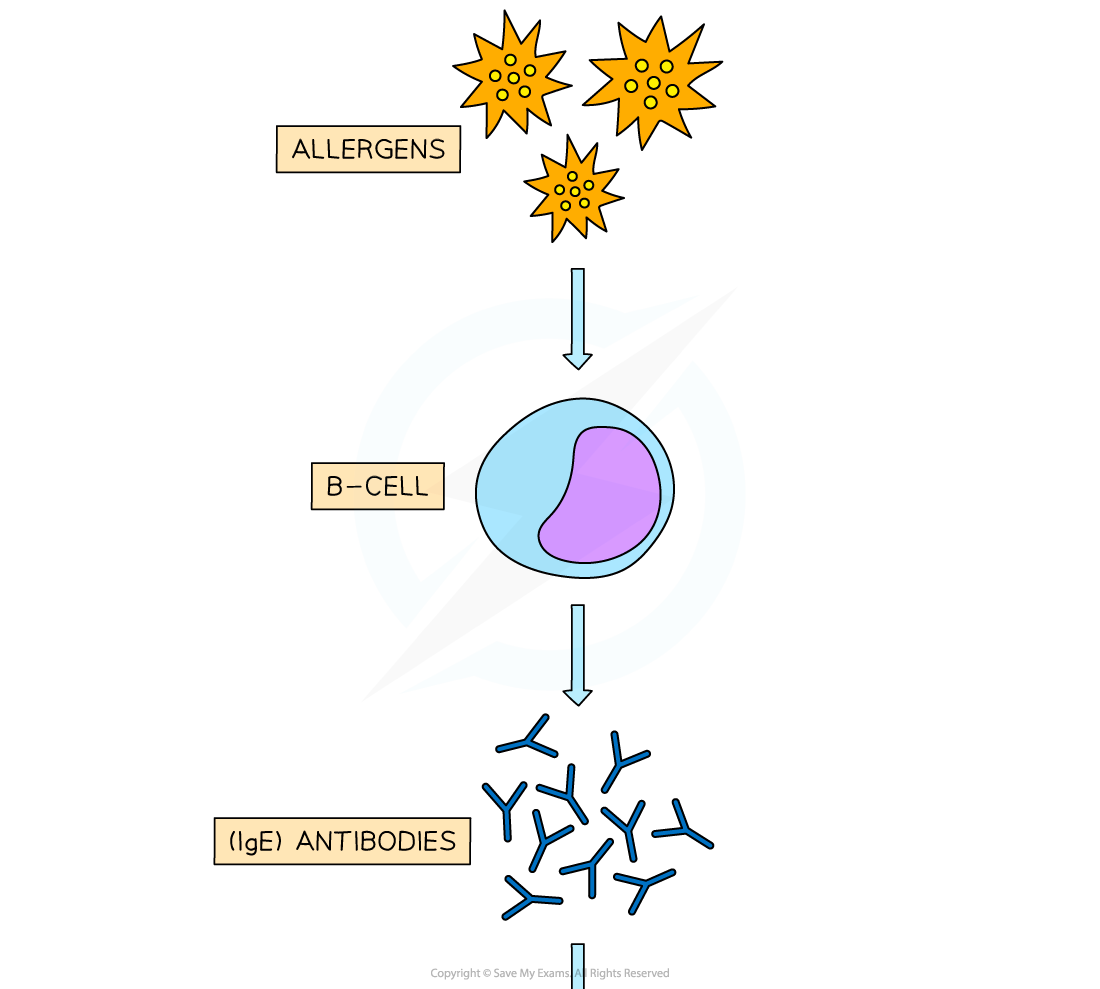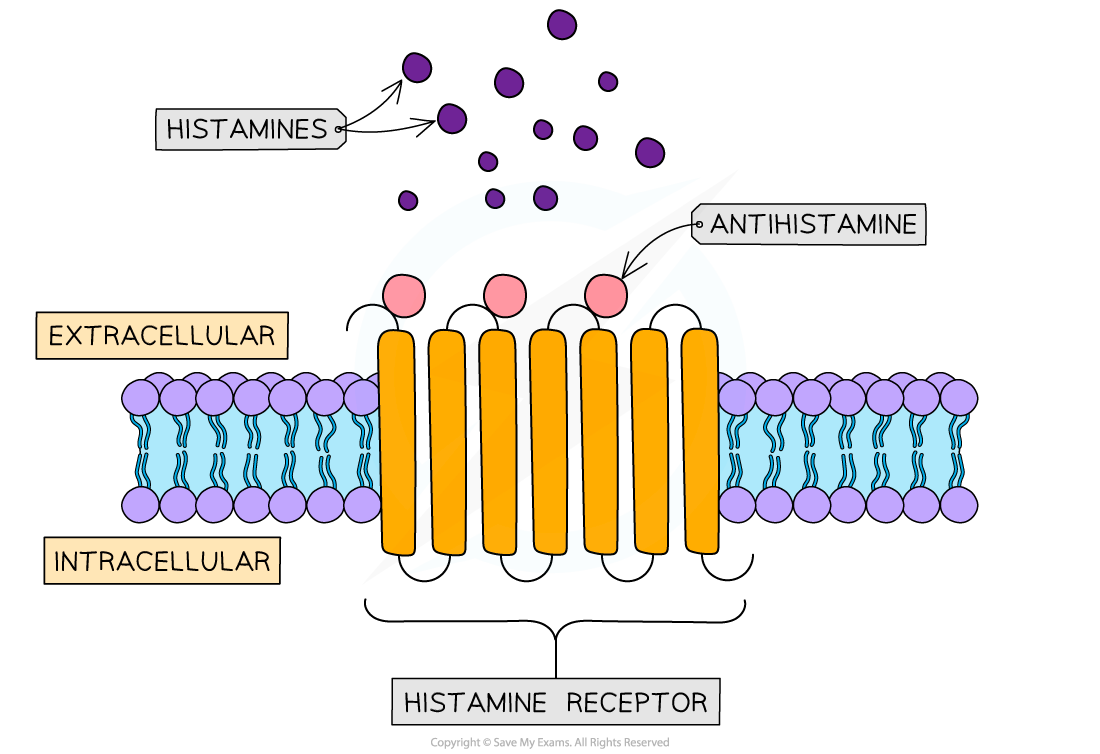Production of Histamines
- Histamines are chemicals created by the body in response to allergens such as pollen, pet dander, food substances or dust
- Allergens are antigens and so they are encountered by B-cells (a type of white blood cell) which respond by producing antibodies (called IgE antibodies)
- The IgE antibodies stimulate histamine production by immune cells:
- One type are mast cells, which are found in the connective tissue
- Another type are basophils which are a type of white blood cell that circulate in the blood
- Release of histamines into the bloodstream leads to dilation of blood vessels increasing blood flow to the affected areas
- Increased permeability of blood vessels increases the amount of fluid leaving the vessels leading to inflammation and triggering both specific and non-specific responses by other immune components found in the blood


Allergens trigger antibody release from B-cells which stimulate mast cells or basophils to release histamines, causing blood vessels to dilate and leak therefore leading to inflammation
Exam Tip
Whilst you do not need to know the specific detail of IgE antibody production, you should be able to link antibody production to the activation of B-cells in response to antigens encountered.
Effects of Histamines
- Histamines also bind to receptors elsewhere in the body causing other symptoms associated with allergic reactions
- Minor symptoms may include a runny nose, itchy skin and eyes or sneezing
- More serious symptoms may include extensive body rashes, hives or swelling which can result in anaphylaxis
- A serious allergic reaction could be life-threatening
- In order to relieve the symptoms and reduce the effect of an allergic reaction, antihistamines can be taken which bind to histamine receptors on body cells and act as an inhibitor to prevent histamine binding

Antihistamines bind to the histamine receptors in the cell membrane blocking the histamine from binding
